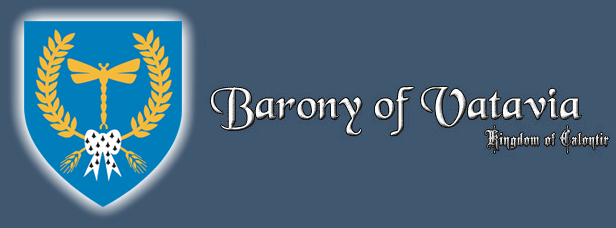
Herb Gardens
by Friar Thomas Bacon (David Moreno)
Orignally published in the July 1998, A.S. XXXIII issue of the Dragonflyre, a publication of the Barony of Vatavia.
During the Middle Ages, local sufficiency was essential. Goods from other places were hard to come by and expansive. This included medicine. As a result most medications were home remedies made from materials that could be found at hand. For many locations, the local native herb population was limited in either variety and/or amount. The solution was for each household to have its own herb garden which could include herbs from elsewhere. Whiter in just a portion of the larger vegetable garden, or in a separate garden of its own, growing herbs was seen as just as essential as growing food. This essay will explore what was grown in these gardens.
There is little mystery what was grown in these gardens as books on herbs and their uses were quite popular. Works from the late Roman Empire remained available, and each generation seemed to produce its own version of this genre. The quality of these books varied considerably. The best were written from direct observation; the worst were verbatim copies of early works with all their attendant mistakes. Many were illustrated, but the illustrations were usually ambiguous and many times just plain wrong. The medical theory espoused in these books was the standard four humor theory, and each plant was given a place within this framework. More useful was the listing of which conditions each plant could treat and its side-effects. These are fairly accurate, and with some caution could be used today.
The plants found in a medieval herb garden would nowadays be collected into four groups: spices, ordinary fruits and vegetables, flowers and weeds. This categorization is arbitrary and modern. During the Middle Ages everything that could be used was, often with more then one use. Such was life on the margin.
When one mentions herbs, the modern mind usually thinks of those plants otherwise thought of as spices. These would include basil, bay, dill, fennel, garlic, ginger, marjoram, parsley, rosemary, sage, and thyme. Valued today, and then, for the flavor they add to food, they were also in great demand to relieve any number of ills and conditions.
Fruits and vegetables are not usually though of as herbs. Since their primary use was food, they were usually not found with the other herbs. Nevertheless, medicinal properties were still attributed to them. And while their reasoning was wrong, modern science agrees with their conclusions as they are filled with vitamins and other required substances.
In today's gardens flowers are cultivated for their colorful blooms. And while their beauty did not go unnoticed in the Middle Ages, it was for their use in poultices that they were grown. Such flowers as cinquefoil, columbine, daisy, honeysuckle, iris, lavender, lily, peony, primrose, rose, and violet would be found in the gardens. This was in addition to numerous wildflowers that would be collected.
The bane of suburban gardeners had a place in the medieval garden. The most infamous of these is the dandelion, used to make a number of drinks. Other plants now considered weeds that were cultivated or collected include: bindweed, chickweed, goose-grass, ragweed, and tansy. Their fall from grace came as medical theory shifted and the modern drug industry arose. Their bitterness kept them from being used as spices and their drab blooms precluded them from being admired as flowers. Their final sin, and the source of their disparagement by suburban gardeners, is their propensity to crowd out other plants.
Plants used for medicinal purposes were by no means limited to those mentioned. Wild plants such as bracken, lichen, or reeds were also harvested and used. As were crops such as clover, hay and wheat. Nor were trees like ash, birch or oak overlooked. But while used when available, they were rarely cultivated for medical purposes.
What was planted in medieval gardens was governed by their practical uses. This did not preclude the garden form being arranged to give a pleasing effect. The medieval mind did not divorce beauty from function. Though herb gardens had a serious purpose, they could hold their own against any modern garden.
Bibliography
Arano, Luisa Cogliati. The Medieval Health Handbook: Tacuinum Sanitatis. New York: George Braziller, 1976.
Baldach, Ellbochasim de. The four seasons of the House of Cerruti. Trans. Judith Spencer. New York: Facts on File Publications, 1984.
Bayard, Tania, trans. A Medieval Home Companion: Housekeeping in the Fourteenth Century. New York: HarperPerennial, 1991.
Gerard, John. Gerard's Herbal: A History of Plants. Ed. Marcus Woodward. London: Senate, 1994.
A Medieval Herbal. San Francisco: Chronicle Books, 1994.
Whiteman, Robin. Brother Cadfael's Herb Garden : An Illustrated Companion to Medieval Plants and Their Uses. Illus. Rob Talbot. New York: Little Brown & Company, 1996.
Copyright © 1997 - present His Lordship Friar Thomas Bacon (David Moreno). All rights reserved.